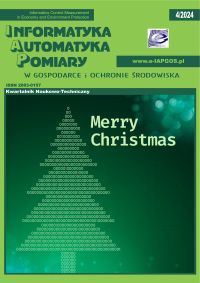SPOTKANIE PRZESZŁOŚCI Z PRZYSZŁOŚCIĄ, CZYLI MUZEUM JAKO BUDYNEK TYPU SMART
Mirosław Dechnik
mdechnik@pk.edu.plPolitechnika Krakowska im. Tadeusza Kościuszki, Małopolskie Laboratorium Budownictwa Energooszczędnego (Polska)
Abstrakt
W artykule przedstawiono charakterystykę technologii Smart Building w kontekście zastosowania w budynku muzeum. Zaprezentowano rolę zintegrowanego systemu sterowania i automatyzacji w inteligentnym budynku muzealnym, jego funkcje, a także problematykę maksymalizacji efektywność energetycznej, przy jednoczesnym zapewnieniu optymalnych warunków konserwacji zabytków oraz przebywania ludzi.
Słowa kluczowe:
muzeum, automatyka budynku, efektywność energetyczna, inteligentny budynek, Smart BuildingBibliografia
Ahmad N., Ahmad S. Sh, Talib A.: Illuminance distributions, visual response and limits for conservation of exhibits in Admiral Cheng Ho Gallery, Malaysia. 2011 IEEE Symposium on Computers & Informatics, 407–412.
Google Scholar
Czop J.: Warunki mikroklimatyczne w muzeum – nowe rekomendacje, ABC profilaktyki konserwatorskiej w muzeum. Ochrona Zbiorów, Seria wydawnicza Narodowego Instytutu Muzealnictwa i Ochrony Zbiorów 3/2013, 35–43.
Google Scholar
De Graaf T., Dessouky M., Müller H.F.O.: Sustainable lighting of museum buildings Renewable Energy 67/2014, 30–34.
Google Scholar
Dechnik M., Moskwa S.: Smart House - inteligentny budynek - idea przyszłości. Przegląd Elektrotechniczny 9/2017, 1–10.
Google Scholar
Di Salvo S.: Innovation in lighting for enhancing the appreciation and preservation of archaeological heritage. Journal of Cultural Heritage 15(2)/2014, 209–212.
Google Scholar
Dolecki S.: Historia doświetlona automatyką. Dzisiaj – magazyn dla klientów ABB w Polsce, nr 1/2011, 12-17
Google Scholar
Fedorczak-Cisak M., Furtak M., Kotowicz A.: Aspects and implementation of low-energy buildings design. Vìsnik Nacìonal'nogo Unìversitetu "L'vivs'ka Polìtehnìka" 844/2016, 253–259.
Google Scholar
Ferdyn-Grygierek J.: Indoor environment quality in the museum building and its effect on heating and cooling demand. Energy and Buildings 85/2014, 32–44.
Google Scholar
Ferdyn-Grygierek J.: Monitoring of indoor air parameters in large museum exhibition halls with and without air-conditioning systems. Building and Environment 107/2016, 113–126.
Google Scholar
Ferdyn-Grygierek J., Baranowski A.: Internal environment in the museum building – Assessment and improvement of air exchange and its impact on energy demand for heating. Energy and Buildings 92/2015, 45–54.
Google Scholar
Folga-Januszewska D.: Muzeum: definicja i pojęcie. Czym jest muzeum dzisiaj? Muzealnictwo 49/2017, Narodowy Instytut Muzealnictwa i Ochrony Zbiorów, 200–203.
Google Scholar
Grela J.: Analiza wpływu systemów automatyzacji na efektywność energetyczną instalacji i obiektów budowlanych. Rozprawa doktorska, promotor: Marian Noga, promotor pomocniczy: Andrzej Ożadowicz, AGH, Kraków 2017
Google Scholar
Kramer R., Maas M.P.E., Martens M.H.J., van Schijndel A.W.M., Schellen H.L.: Energy conservation in museums using different setpoint strategies: A case study for a state-of-the-art museum using building simulations. Applied Energy 158/2015, 446–458.
Google Scholar
Kramer R., van Schijndel J., Schellen H.: Dynamic setpoint control for museum indoor climate conditioning integrating collection and comfort requirements: Development and energy impact for Europe. Building and Environment 118/2017, 14–31.
Google Scholar
Mueller H. F.O.: Energy efficient museum buildings. Renewable Energy, t. 49, 2013, 232–236
Google Scholar
Noga M., Ożadowicz A., Grela J.: Efektywność energetyczna i Smart Metering – nowe wyzwania dla systemów automatyki budynkowej. Napędy i Sterowanie, 12/2012, 54–59.
Google Scholar
Romańska-Zapała A., Bomberg M., Fedorczak-Cisak M., Furtak M., Yarbrough D., Dechnik M.: Buildings with environmental quality management (EQM) Part 2: Integration of hydronic heating/cooling with thermal mass. Journal of Building Physics, 2017 [DOI: 10.1177/1744259117735465].
Google Scholar
Romańska-Zapała A., Furtak M., Dechnik M.: Cooperation of Horizontal Ground Heat Exchanger with the Ventilation Unit During Summer – Case Study. World Multidisciplinary Civil Engineering-Architecture-Urban Planning Symposium (WMCAUS), IOP Conference Series: Materials Science and Engineering 245/2017 [DOI: 10.1088/1757-899X/245/5/052027].
Google Scholar
Silva H.E., Henriques F.M.A., Henriques T.A.S., Coelho G.: A sequential process to assess and optimize the indoor climate in museums. Building and Environment 104/2016, 21–34.
Google Scholar
Szász Cs., Husi G.: The intelligent building definition: a Central-European approach. System Integration (SII), 2014 IEEE/SICE International Symposium on, 216–221.
Google Scholar
Zaremba K.: Bezpieczne oświetlenie muzealne – światłowody czy diody LED? Przegląd Elektrotechniczny 1/2007, 70–72.
Google Scholar
Nowoczesne centra kultury z automatyką budynkową ABB, http://www.abb.pl/ [13.09.2018]
Google Scholar
PN-EN 15757:2012 Konserwacja dóbr kultury – Wymagania dotyczące temperatury i wilgotności względnej w ograniczaniu mechanicznych uszkodzeń organicznych materiałów higroskopijnych powodowanych oddziaływaniem klimatu.
Google Scholar
Sposoby właściwego oświetlania wnętrz muzealnych i ekspozycyjnych, http://www.bip.muzeum.stalowawola.pl/ [15.10.2017].
Google Scholar
Autorzy
Mirosław Dechnikmdechnik@pk.edu.pl
Politechnika Krakowska im. Tadeusza Kościuszki, Małopolskie Laboratorium Budownictwa Energooszczędnego Polska
Statystyki
Abstract views: 170PDF downloads: 148
Licencja

Utwór dostępny jest na licencji Creative Commons Uznanie autorstwa – Na tych samych warunkach 4.0 Miedzynarodowe.
Inne teksty tego samego autora
- Mirosław Dechnik, Szczepan Moskwa, BENCHMARKING W ELEKTROENERGETYCZNYCH SYSTEMACH DYSTRYBUCYJNYCH , Informatyka, Automatyka, Pomiary w Gospodarce i Ochronie Środowiska: Tom 5 Nr 1 (2015)








